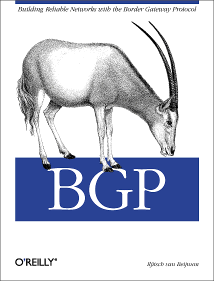
|

|

|
|
Home ·
BGP Expert Test ·
What is BGP? ·
BGP Vendors ·
Links ·
Archives ·
Books ·
My New BGP Book | ||
2005 IPv4 Address Use Report(Also see the 2006 IPv4 Address Use Report.)According to AfriNIC, APNIC, ARIN, LACNIC and RIPE NCC statistics as published on their respective FTP servers, they gave out 165.45 million IPv4 addresses in 2005. Out of 3706.65 million usable IPv4 addresses, 1468.61 million are still available as of january 1, 2006. UPDATE jan 16 In the statistics downloaded on january 15th, the total number of addresses given out in 2005 was 166.7 million. However, I haven't adjusted the calculations below, those all use the january 1st figure of 165.45 million. See http://petersgriddle.net/2006/01/network-digital-divide-on-ip-addresses.html for additional thoughts on the distribution of IPv4 addresses over the different countries in the world. In the list at the bottom of this page, there are numbers for both "UK" and "GB". This is because the RIPE NCC uses the two letter code "UK" for address space given out to entities in the UK. However, some address space in the UK was given out by other registries, which use the official country code for the United Kingdom of Great Britain and Northern Ireland, which is "GB". UPDATE feb 1 The total for 2005 is now 167.54 million addresses, and the RIPE NCC has decided to use the official country code "GB" rather than the commonly used code "UK" in its statistics from now on. The statistics below haven't been changed to reflect this. (End updates.) Breakdown by Regional Internet Registry over the past few years:
2000 2001 2002 2003 2004 2005
AfriNIC 0.56 0.38 0.25 0.21 0.51 1.89
APNIC 21.08 28.84 27.08 33.08 42.92 53.97
ARIN 30.96 32.76 21.02 22.14 33.51 36.30
LACNIC 0.88 1.57 0.65 2.62 3.77 11.04
RIPE NCC 24.88 25.39 19.94 29.72 47.75 62.25
Total 78.35 88.95 68.93 87.77 128.45 165.45
AfriNIC gives out address space in Africa, APNIC in the Asia-Pacific region, ARIN in North America, LACNIC in Latin America and the Caribbean and the RIPE NCC in Europe, the former Soviet Union and the Middle East.
Note that the RIRs tend to change their records retroactively from time to time. For instance, the january 1, 2005 records show that only 117.3 million addresses were given out in 2004. Also, reclaimed address space isn't listed explicitly. From the fact that the 1-1-2005 records show 1939 million addresses given out before 2004 but the 1-1-2006 records show 1928.48 million addresses for the same period, we can conclude that 11.15 million addresses given out before 2004 have been reclaimed in 2005. The Internet Assigned Numbers Authority (IANA, part of ICANN) keeps an overview of the IPv4 address space at http://www.iana.org/assignments/ipv4-address-space. The list consists of 256 blocks of 16.78 million addresses. Breakdown: Delegated to Blocks Addresses (millions) AfriNIC 1 16.78 APNIC 16 268.44 ARIN 23 385.88 LACNIC 4 67.11 RIPE NCC 19 318.77 Various 50 838.86 End-user 43 721.42 Available 65 1090.52Of the 1895.83 million addresses delegated to the five Regional Internet Registries, 1517.74 million have been delegated to end-users or ISPs by the RIRs, and 378.09 million are still available. Along with the 1090.52 million addresses still available in the IANA global pool this makes the total number of available addresses 1468.61 million. The size of address blocks given follows an interesting trend. The table below shows the number of requests for a certain range of block sizes (equal or higher than the first, lower than the second value).
2000 2001 2002 2003 2004 2005
< 1000 326 474 547 745 1022 1309
1000 - 8000 652 1176 897 1009 1516 1891
8000 - 64k 1440 868 822 1014 1100 1039
64k - 500k 354 262 163 215 404 309
500k - 2M 19 39 29 46 61 60
> 2M 3 5 5 6 7 18
The number of blocks in the two smallest categories have increased rapidly, but not as fast as the number of blocks in the largest category, in relative numbers at least. However, the increase in large blocks has a very dramatic effect while the small blocks are insignificant, when looking at the millions of addresses involved:
2000 2001 2002 2003 2004 2005
< 1000 0.10 0.16 0.18 0.25 0.35 0.44
1000 - 8000 2.42 4.47 3.23 3.45 4.49 5.07
8000 - 64k 18.79 12.81 11.35 14.00 15.99 15.46
64k - 500k 35.98 32.19 20.28 25.51 42.01 34.23
500k - 2M 12.68 24.64 21.30 31.98 44.63 41.63
> 2M 8.39 14.68 12.58 12.58 20.97 68.62
The medium-sized blocks seem most affected by the burst of the internet bubble.
Another way to look at the same data: Year Blocks Addresses (M) Average block size 2000 2794 78.35 28043 2001 2824 88.95 31497 2002 2463 68.93 27985 2003 3035 87.77 28921 2004 4110 128.45 31252 2005 4626 165.45 35765The 2222.38 million addresses currently in use aren't very evenly distributed over the countries in the world. The current top 15 is: Country Addresses US 1324.93 M United States JP 143.00 M Japan EU 113.87 M Multi-country in Europe CN 74.39 M China CA 67.43 M Canada DE 51.13 M Germany FR 45.16 M France KR 41.91 M Korea UK 40.18 M United Kingdom GB 33.63 M Great Britain AU 26.87 M Australia IT 18.39 M Italy BR 17.17 M Brazil NL 16.40 M Netherlands ES 16.29 M SpainThe US holds 60% of the IPv4 address space. The other countries in the list together hold another 32%. Use the form below to query a (more or less) up-to-date copy of the base data.
|
